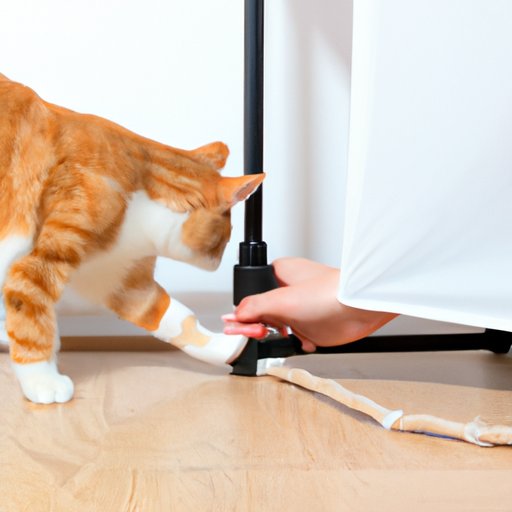Introduction
Fleas are a common pest for cats, and even indoor cats are not immune to their presence. Fleas are small, wingless insects that feed on the blood of mammals, including cats. They have a hard exoskeleton and are capable of jumping from host to host, making them difficult to eradicate once they enter your home. Flea infestations can lead to skin irritation, anaemia, and other health risks for your cat, so it’s important to take steps to prevent and treat flea infestations as soon as possible.
Identifying Flea Infestations in Indoor Cats
If you suspect your indoor cat has fleas, there are a few signs to look out for. The most obvious sign is seeing fleas on your cat’s fur or in their environment. You may also notice excessive scratching or licking of the fur, which could indicate the presence of fleas. Other signs include scabs or sores on the skin, thinning hair, and black specks (flea dirt) in the fur. If you’re still unsure if your cat has fleas, your vet can diagnose the problem by conducting a skin scrape or a flea comb test.
How Fleas Can Enter an Indoor Environment and Affect Your Cat
Fleas can enter an indoor environment in a variety of ways. They can hitch a ride on other animals, such as rodents, stray cats, or even humans. They can also be brought in on clothing or furniture from outside. Once inside, fleas can quickly establish a population, particularly in areas where your cat spends a lot of time, such as bedding or carpets. Fleas feed on the blood of their hosts, so an infestation can lead to skin irritation, anaemia, and other health risks for your cat.

Prevention Strategies to Keep Fleas Away from Your Indoor Cat
The best way to protect your indoor cat from fleas is to take preventive measures. Regularly vacuum carpets and furniture to remove fleas and their eggs. Keep cats away from other animals, as they can easily pick up fleas from them. Groom and bathe your cat regularly to help remove fleas and their eggs. And finally, use flea preventative products, such as flea collars or spot-on treatments, to keep fleas away from your cat.

Treating Flea Infestations in Indoor Cats
If your indoor cat does become infested with fleas, there are a few different treatments available. Medicated shampoos can help remove fleas from your cat’s fur. Flea collars can provide long-term protection against fleas. Oral medications can help kill adult fleas and their eggs. And spot-on treatments can be applied directly to your cat’s skin to kill fleas and their eggs.

The Dangers of Fleas for Indoor Cats
Fleas can cause a number of health problems in cats, both indoors and outdoors. Flea bites can cause skin irritation and allergic reactions. If left untreated, flea infestations can lead to skin infections and anaemia due to blood loss. It’s important to take steps to prevent and treat flea infestations as soon as possible to protect your cat’s health.
Conclusion
Fleas can be a nuisance for any pet owner, but they are especially dangerous for cats living indoors. Identifying flea infestations early, taking preventive measures, and treating infestations promptly are all important steps in keeping your indoor cat safe from fleas. By following these tips, you can help ensure your cat stays healthy and free of fleas.


